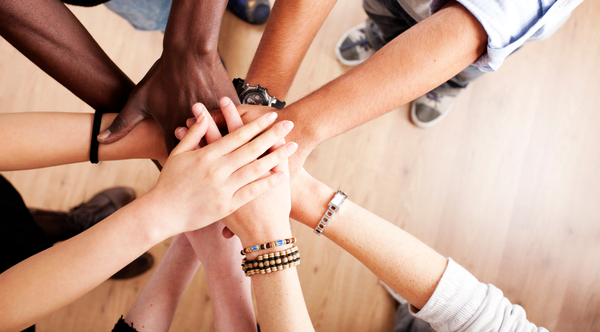
A Brand Community is “a specialized, non-geographically bound community, based on a structured set of social relations among admirers of a brand.” This is according to Albert Muniz Jr. and Thomas C. O’Guinn who coined the term in 2001 with their study on Brand Community for the Journal of Consumer Research.
Muniz and O’Guinn said Brand Communities exhibit three traditional markers of community:
- Shared consciousness
- Rituals and traditions
- A sense of moral responsibility
Although it would be easy to see how a lot of brands would jump on this bandwagon, the Harvard Business Review said in, Getting Brand Communities Right, it’s not so easy. There are Myths vs Realities about Brand Communities.
- MYTH #1 :A brand community is a marketing strategy
- THE REALITY: A brand community is a business strategy
- MYTH #2: A brand community exists to serve the business
- THE REALITY: A brand community exists to serve the people in it
- MYTH #3: Build the brand, and the community will follow
- THE REALITY: Engineer the community, and the brand will be strong
- MYTH #4: Brand communities should be love-fests for faithful brand advocates
- THE REALITY: Smart companies embrace the conflicts that make communities thrive
- MYTH #5: Opinion leaders build strong communities
- THE REALITY: Communities are strongest when everyone plays a role
- MYTH #6: Online social networks are the key to a community strategy
- THE REALITY: Online networks are just one tool, not a community strategy
How do you separate the myth from reality? Who is getting brand communities right?
Here are 7 best examples of Brand Communities. (All of these Brand Communities have been around for at least 5 years and are growing).
- BEING GIRL (PROCTER & GAMBLE): The site was created in 2000 as a destination for young, teenage girls. P&G includes content provided by experts and encourages open discussion with expert advice on topics such as menstruation, eating disorders, acne and dating. They take a big-sister approach. They also advertise the companies products, Always and Tampax. Being Girl is now available in over 25 countries. It has been cited in the book, Groundswell, as delivering 4X the Return on Investment (ROI) of traditional marketing.
- FIGMENT (RANDOM HOUSE): Is an online writing community owned by Random House, the biggest general-interest trade book publisher in the world. It was founded by Jacob Lewis and Dana Goodyear in 2010. It currently has over 300,000 users. The target group of the community is mainly teenagers between 13 and 18 years old. It’s succeeded because they gave the community something to do, write and share novels. This isn’t just a community of interest, it’s a community of practice too. They highlight the best contributions of the community.
- H&R BLOCK: Tax preparation is a highly seasonal business. H&R provides immediate access to a tax professional for Q&A through the “Get Answers” section of their website but also connects you to learn and share experiences with others through their H&R Community. The effort secured 1,500,000 unique visitors and answered 1,000,000 questions for a 15% lift in business versus the period before H&R Block created the community.
- HARLEY OWNERS GROUP (HOG): Is a sponsored community, operated by Harley-Davidson for enthusiasts. The HOG is “the grandaddy of all community-building efforts,” serving to promote not just a consumer product, but a lifestyle. The HOG has also served to open new revenue streams for the company, with the production of tie-in merchandise offered to club members. Membership is 1,000,000+. The Harley Owners Group was created in 1983 as a way to build longer-lasting and stronger relationships. At that time, the company was facing bankruptcy.
- LUGNET (LEGO): When Lego Group set out to develop Mindstorms NXT, the latest version of its game for building programmable robots, it enlisted help from a group of adult enthusiasts whom it found on Lugnet.com the largest unofficial community of Lego fans. While the marketing target for Mindstorms is mainly teenage boys, the people that Lego reached out to were a group of men in their 40s and 50s who knew each other from communicating and working together on elaborate Lego projects on Lugnet.com.The group’s members, according to a Lego spokesman, contributed “incredibly valuable insights” in hardware, software, design and usability based on their own experiences.
- MY STARBUCK IDEA: Is now 6+ years-old and remains the gold standard of crowd sourced tip boxes that have actually worked for a brand and delivered ideas from customers (150,00 plus) with innovations (277) that have actually been implemented. Customers today can order a “skinny” beverage and a cake pop, garner digital rewards for using their Starbucks Card and enjoy free Wi-Fi – all thanks to suggestions from fans. “Our passionate customers and partners have been sharing their ideas with us on My Starbucks Idea, and we have listened and acted upon many amazing innovations that we have received from this online community,” said Alex Wheeler, VP global digital marketing for Starbucks.
- ORACLE COMMUNITY (ORACLE): Is a site for people interested in Oracle Corp.’s database and software products. Members share personal stories, pictures, videos and birthdays. They can create blogs on the site, form groups around themes and build networks of designated friends. Members can also schedule meetings and events both online and in person.
These examples show Brand Communities can produce significant results and ROI but they also demonstrate companies should not try to create them unless they accept are willing to accept diversity of opinion, occasional conflict and apply the internal resources necessary to engage.
Do these examples explain Brand Communities? Are they best examples to you?




